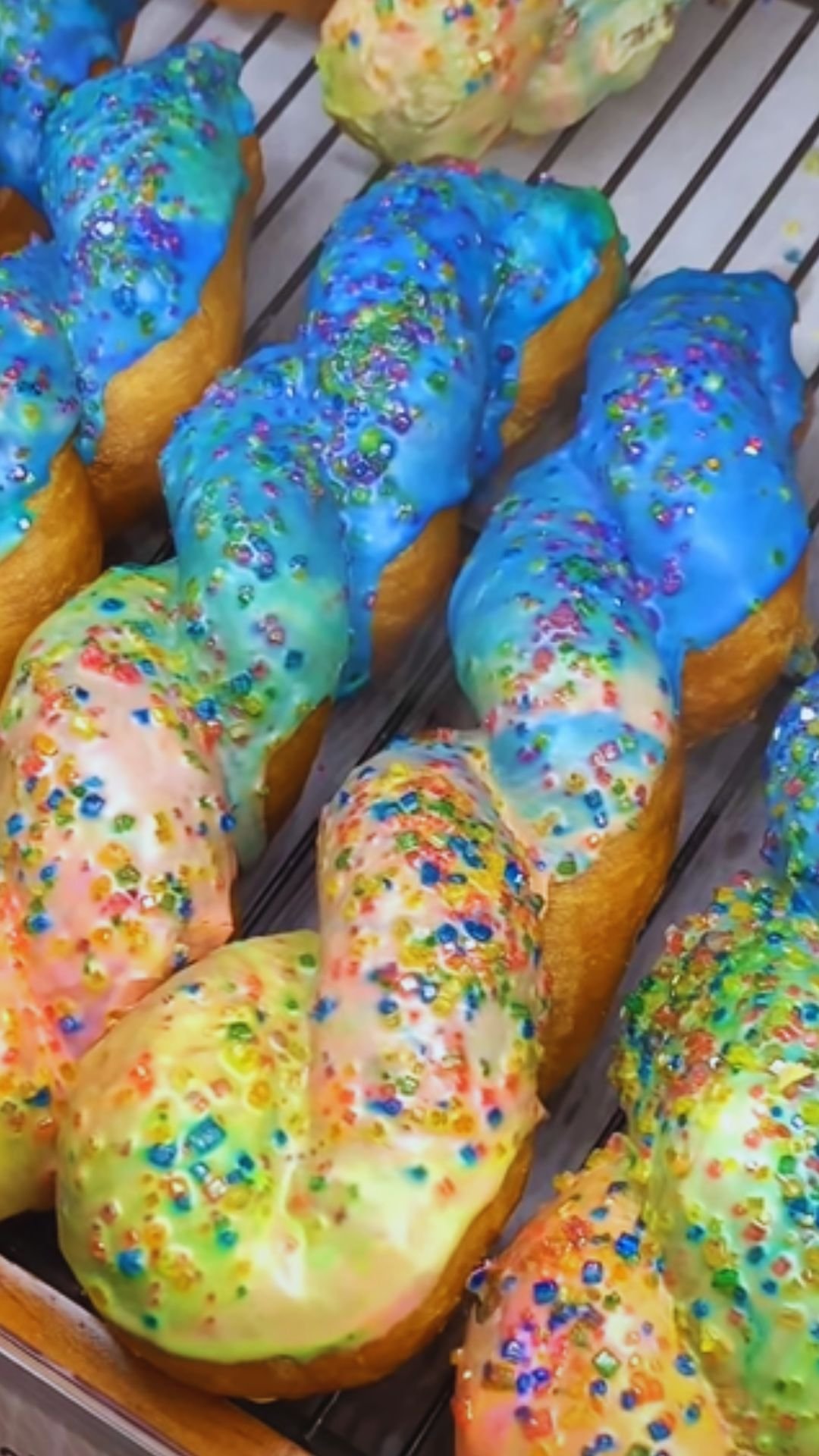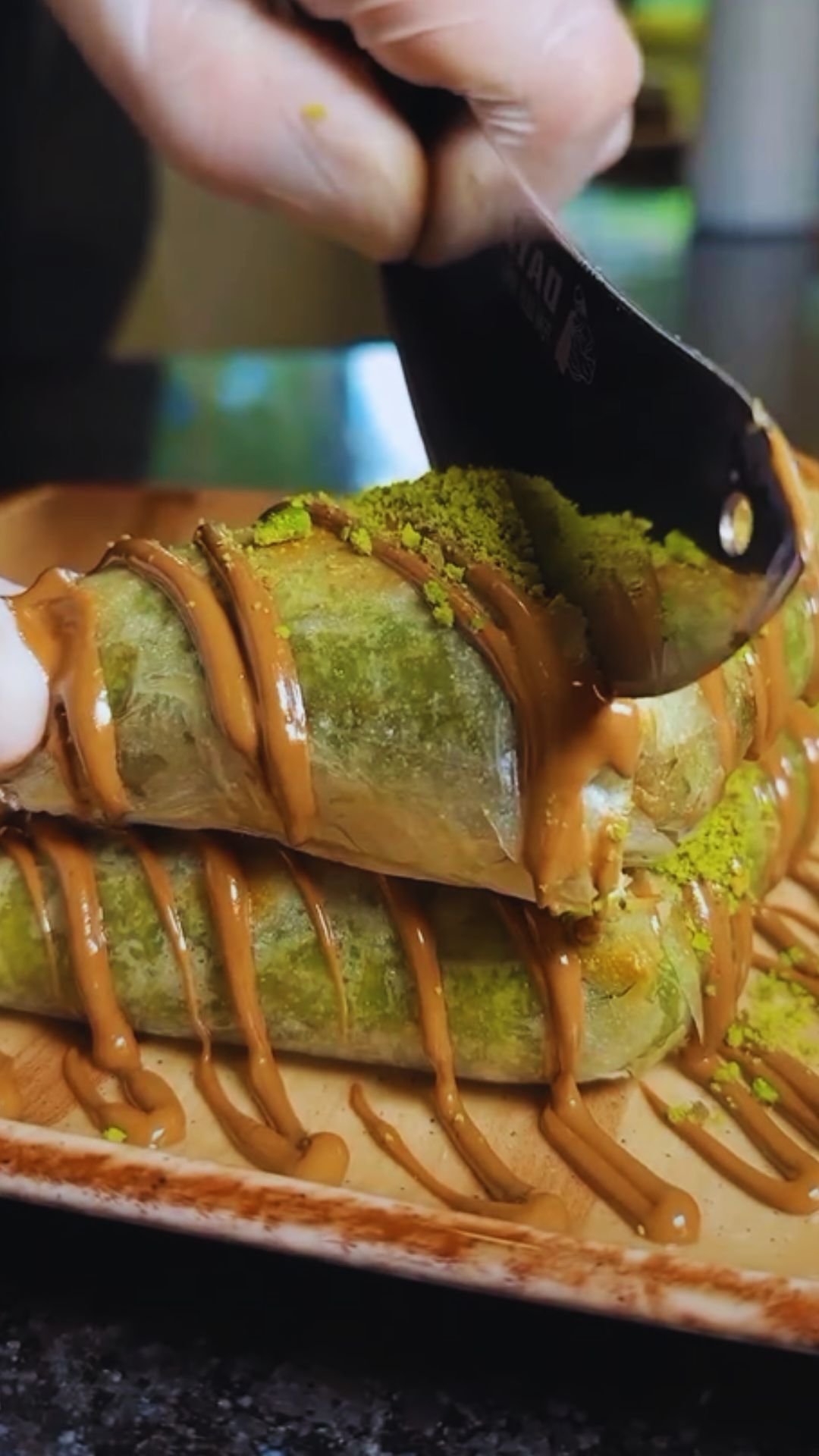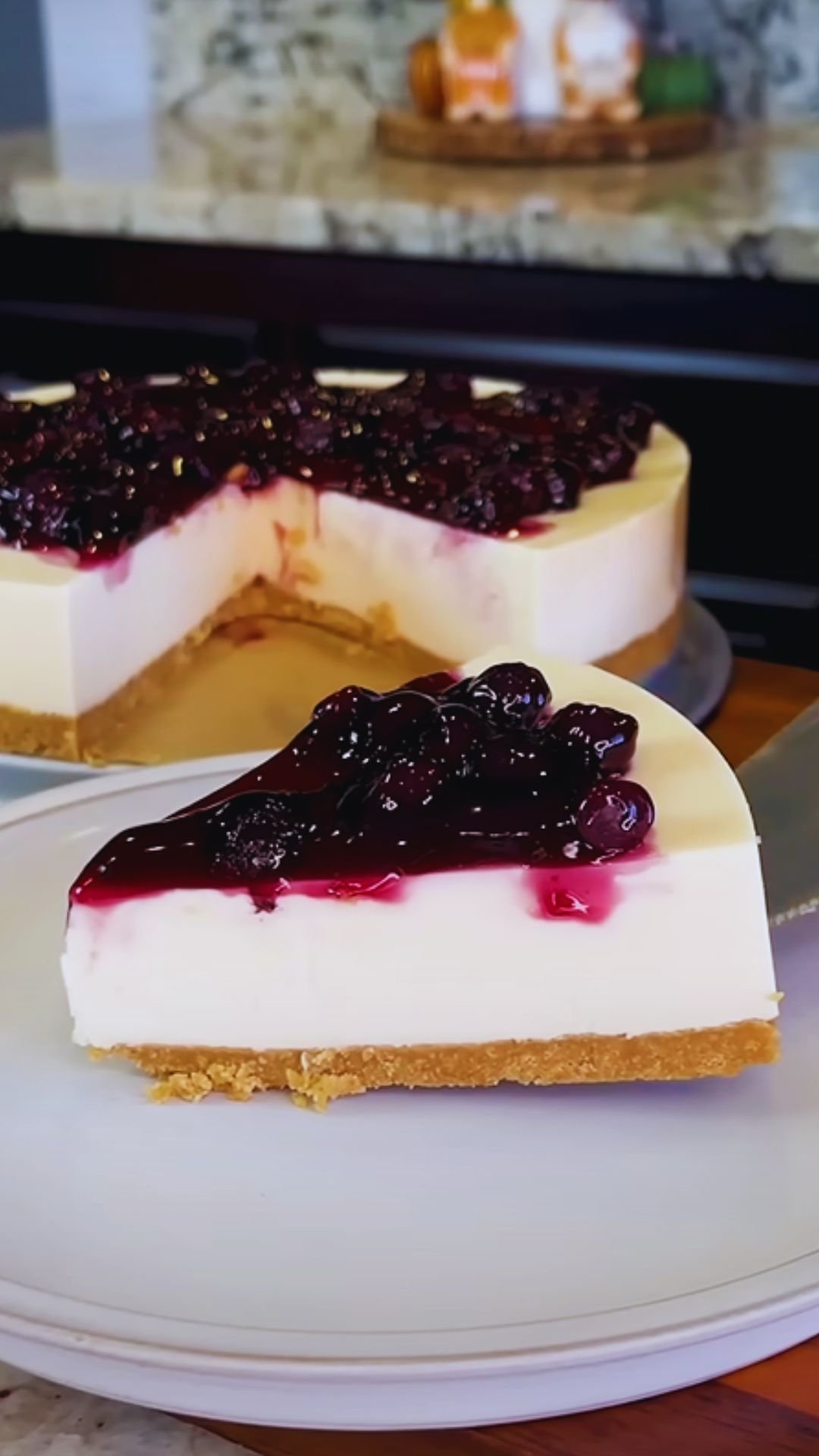There’s something magical about the aroma of freshly fried dough wafting through the kitchen. As someone who has spent years exploring global street foods, I’ve developed a special affection for Korean twisted donuts, known as Kkwabaegi (꽈배기). These golden, twisted treats have become a staple in my home baking repertoire, and today I’m thrilled to share my perfected recipe with you.
The Story Behind Kkwabaegi
When I first encountered Kkwabaegi during my culinary explorations in Seoul, I was instantly captivated by their simplicity and distinctive twisted shape. Unlike their Western counterparts, these Korean donuts rely less on sweetness and more on texture—crispy on the outside, chewy and soft within. They’re traditionally enjoyed as a street food snack or as banchan (side dish) with tea or coffee.
The word “Kkwabaegi” (꽈배기) itself refers to the twisting technique used to create these treats. The process of twisting the dough not only creates their signature appearance but also contributes to their unique texture. Each twist creates layers that, when fried, develop different consistencies—creating that perfect balance between crispness and chewiness that makes these donuts so irresistible.
What Makes Kkwabaegi Special?
Korean twisted donuts differ from American-style donuts in several key ways:
- Texture Focus: While American donuts often prioritize flavors and toppings, Kkwabaegi celebrates texture—specifically the contrast between the crispy exterior and chewy interior.
- Less Sweet: The dough itself contains minimal sugar, with most of the sweetness coming from the optional cinnamon-sugar coating applied after frying.
- No Leavening Time: Unlike many Western donut recipes that require proofing time, Kkwabaegi dough is typically twisted and fried immediately after mixing.
- Simplicity: The ingredient list is remarkably simple, focusing on flour, milk, and a bit of butter for richness.
After making these dozens of times in my home kitchen, I’ve come to appreciate how these donuts showcase the beauty of restraint in cooking. Sometimes, the simplest preparations yield the most satisfying results.
Essential Ingredients for Authentic Kkwabaegi
Let me walk you through the core ingredients that make these twisted treats so special:
All-Purpose Flour : The backbone of our donuts. I recommend using a good quality all-purpose flour with moderate protein content (around 10-12%). This provides enough structure without making the donuts too dense or chewy.
Milk Powder : A secret ingredient that many recipes omit. Adding milk powder enhances the flavor and contributes to that gorgeous golden color when fried. If unavailable, you can skip it, but I find it makes a noticeable difference.
Salt : Just a pinch, but crucial. Salt doesn’t just add flavor—it strengthens the gluten structure and enhances the overall taste.
Sugar : Used sparingly in the dough itself. Korean donuts aren’t overly sweet, with most sweetness coming from the coating.
Butter : A small amount of butter enriches the dough. I recommend using unsalted butter at room temperature for easier incorporation.
Water : The primary liquid that brings the dough together. The temperature matters—lukewarm water helps activate the gluten properly.
Vegetable Oil : For frying. I recommend a neutral oil with a high smoke point like canola or peanut oil.
Cinnamon-Sugar Mixture : While optional, this classic coating adds sweetness and warmth. Some versions use just sugar, but I find the hint of cinnamon irresistible.
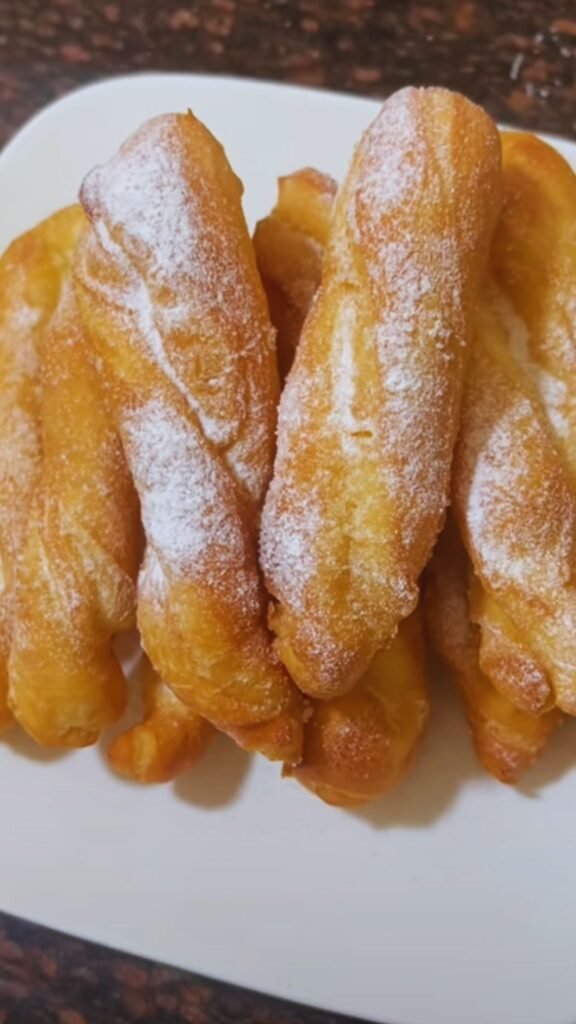
My Perfected Kkwabaegi Recipe
After numerous attempts and refinements, here’s my go-to recipe that consistently produces perfect results:
Ingredients
| For the Dough | Quantity | Notes |
|---|---|---|
| All-purpose flour | 2 cups (250g) | Sifted for best results |
| Milk powder | 2 tablespoons | Optional but recommended |
| Salt | ½ teaspoon | Fine sea salt preferred |
| Granulated sugar | 2 tablespoons | Just enough for slight sweetness |
| Unsalted butter | 2 tablespoons (30g) | Room temperature |
| Lukewarm water | ½ cup (120ml) | Approximately 100°F/38°C |
| For Frying | Quantity | Notes |
|---|---|---|
| Vegetable oil | 4-5 cups | Enough for 2-inch depth in pot |
| For Coating (Optional) | Quantity | Notes |
|---|---|---|
| Granulated sugar | ½ cup | Fine sugar works best |
| Ground cinnamon | 1 tablespoon | Adjust to taste |
Step-by-Step Process
- Prepare the Dough
- In a large bowl, whisk together the all-purpose flour, milk powder, salt, and sugar.
- Add the room-temperature butter and work it into the dry ingredients using your fingertips until it resembles coarse crumbs.
- Gradually add the lukewarm water while stirring with a wooden spoon.
- Once the dough starts coming together, turn it out onto a clean work surface and knead for 5-7 minutes until smooth and elastic.
- The dough should be slightly tacky but not sticky. If too dry, add a teaspoon of water; if too wet, add a tablespoon of flour.
- Cover the dough with a damp cloth and let it rest for 15-20 minutes. (While not traditional, I find this short rest makes the dough easier to work with).
- Shaping the Twisted Donuts
- Divide the dough into 8 equal portions (about 50-55g each for perfect-sized donuts).
- Roll each portion into a rope approximately 12 inches (30cm) long. The thickness should be even throughout—about the diameter of your finger.
- Hold each end of the rope and twist in opposite directions, creating a tight, twisted strand.
- Bring the ends together and press firmly to seal, forming a twisted ring.
- Place the shaped donuts on a parchment-lined tray, covering them with a clean kitchen towel to prevent drying.
- Frying the Donuts
- Heat vegetable oil in a heavy-bottomed pot to 350°F (175°C). Use a thermometer for accuracy—temperature control is crucial for perfect results.
- Carefully lower 2-3 donuts into the hot oil, being careful not to overcrowd the pot.
- Fry for 2-3 minutes, flipping halfway through, until golden brown on all sides.
- Monitor the oil temperature—it will drop when you add the donuts. Adjust the heat to maintain a consistent temperature between 340-350°F (171-175°C).
- Remove the donuts with a slotted spoon and place on paper towels to drain excess oil.
- Coating (Optional)
- While the donuts are still warm (but not hot), mix the sugar and cinnamon in a shallow bowl.
- Toss each donut in the mixture until evenly coated.
- For a more rustic look, you can simply dust the tops with the cinnamon-sugar mixture.
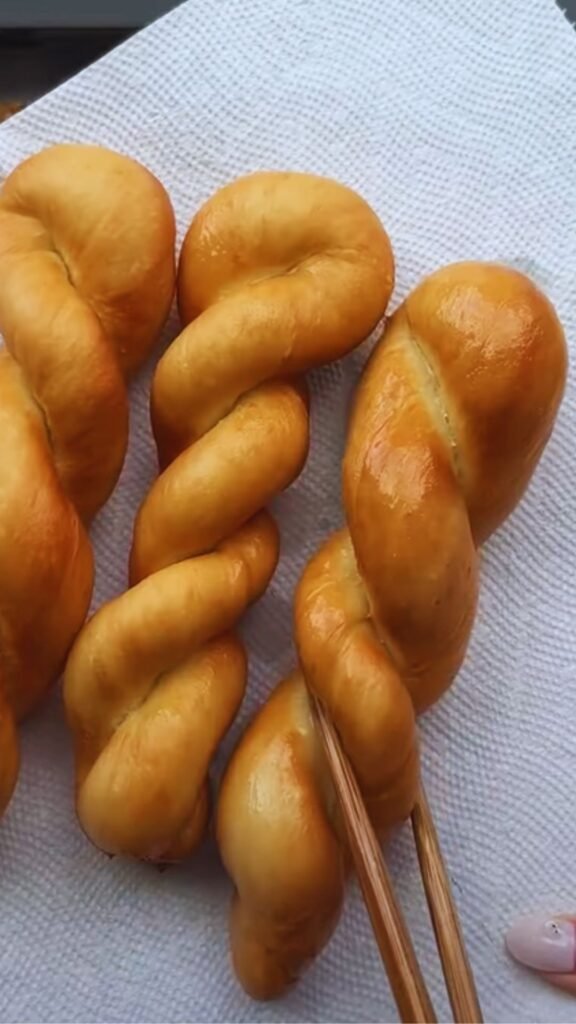
Troubleshooting Common Kkwabaegi Problems
Through my many attempts at perfecting these donuts, I’ve encountered several issues and found solutions worth sharing:
| Problem | Possible Cause | Solution |
|---|---|---|
| Donuts absorbing too much oil | Oil temperature too low | Ensure oil is at 350°F before adding donuts |
| Donuts browning too quickly | Oil temperature too high | Reduce heat and verify with thermometer |
| Dough breaking when twisting | Insufficient gluten development | Knead dough longer; allow proper rest time |
| Dense, tough texture | Overworked dough | Handle dough gently; don’t overknead |
| Donuts unraveling during frying | Ends not sealed properly | Press ends together firmly; slightly moisten ends |
| Pale color despite full cooking | Missing milk solids | Add milk powder to dough; consider a touch of honey |
| Sugar coating falling off | Applied when donuts too hot or cold | Coat when donuts are warm but not hot |
The most common issue I faced initially was uneven cooking—donuts that were golden on the outside but doughy inside. The solution was maintaining proper oil temperature and ensuring the dough ropes weren’t too thick.
Serving Suggestions and Variations
While traditional Kkwabaegi are perfect on their own, I’ve experimented with several variations that have become favorites in my household:
Classic Serving Options
- With Morning Coffee: There’s something perfect about dunking these in a strong cup of coffee.
- Alongside Sikhye: This traditional sweet rice drink complements the mild sweetness of the donuts.
- With Sujeonggwa: A cinnamon-ginger punch that pairs beautifully with the cinnamon-sugar coating.
Creative Variations I’ve Developed
- Matcha-Dusted Kkwabaegi: Replace the cinnamon-sugar coating with a mixture of powdered sugar and high-quality matcha powder.
- Honey-Dipped: Skip the coating and instead drizzle freshly fried donuts with quality honey and a sprinkle of sesame seeds.
- Chocolate Twist: Add 2 tablespoons of cocoa powder to the dough and coat with powdered sugar.
- Sweet Red Bean Filled: Roll the dough thinner, spread with sweet red bean paste, then twist and seal before frying.

Cultural Context and History
My fascination with Kkwabaegi deepened when I learned about their cultural significance. These twisted treats have been a beloved street food in Korea for generations, particularly popular among schoolchildren as an after-school snack.
The exact origins are somewhat murky, but they likely developed from Chinese-influenced fried dough techniques that arrived in Korea centuries ago. What’s particularly interesting is how Kkwabaegi represents the Korean approach to adopted foods—simplifying, refining, and making it distinctly their own.
In modern Korea, you’ll find Kkwabaegi at:
- Pojangmacha: Street food stalls often sell these alongside other fried snacks
- Bakeries: Many Korean bakeries offer their own version, sometimes with modern twists
- School Zones: Small shops near schools frequently sell these as affordable treats for students
The way Koreans have preserved this relatively simple recipe speaks to the culture’s respect for tradition while embracing practical simplicity.
Making Ahead and Storage Tips
From my experience, Kkwabaegi are best enjoyed fresh—nothing compares to that moment when they’re just cool enough to handle but still warm inside. However, I understand the practical need to make things ahead sometimes. Here’s what I’ve found works:
| Storage Method | Shelf Life | Reheating Instructions | Quality Notes |
|---|---|---|---|
| Room temperature (covered) | Up to 24 hours | 10-15 seconds in microwave | Loses crispness but maintains chew |
| Refrigerator (airtight container) | 2-3 days | 30 seconds in microwave or 5 minutes in 300°F oven | Texture becomes denser |
| Freezer (well-wrapped) | Up to 1 month | Thaw at room temperature, then 5-7 minutes in 350°F oven | About 80% of original quality |
Dough Preparation Tip: While the donuts themselves don’t store well long-term, you can prepare the dough up to 24 hours in advance and refrigerate it (tightly wrapped). Allow it to come to room temperature for about 30 minutes before shaping and frying.
Nutritional Information
For those watching their nutritional intake, here’s an approximate breakdown per serving (one donut):
| Nutrient | Amount | % Daily Value* |
|---|---|---|
| Calories | 220 | – |
| Total Fat | 11g | 14% |
| Saturated Fat | 2.5g | 13% |
| Cholesterol | 10mg | 3% |
| Sodium | 150mg | 7% |
| Total Carbohydrates | 28g | 10% |
| Dietary Fiber | <1g | 3% |
| Sugars | 7g | – |
| Protein | 3g | 6% |
*Based on a 2,000 calorie diet
Remember, these values will vary depending on the exact ingredients used and portion sizes. The cinnamon-sugar coating adds approximately 20-30 calories per donut.
Q&A Section
After sharing this recipe with friends and family, I’ve received numerous questions. Here are the most common ones:
Q: Can I make Kkwabaegi without frying them? While the traditional texture truly comes from frying, I’ve experimented with baking them at 375°F (190°C) for about 15 minutes after brushing with melted butter. The result isn’t authentic but makes a decent alternative for those avoiding fried foods.
Q: My dough is too sticky. What should I do? Start by dusting your hands with flour. If it’s still too sticky, add flour one tablespoon at a time until it reaches a workable consistency. Be careful not to add too much, as this can make the donuts dense.
Q: Can I use active dry yeast in this recipe? Traditional Kkwabaegi doesn’t use yeast, but you can add 1 teaspoon of instant yeast to the dry ingredients if you prefer a lighter, more airy texture. Allow the dough to rise for 30-45 minutes before shaping.
Q: How do I know when the oil is at the right temperature without a thermometer? Drop a small piece of dough into the oil. It should sizzle gently and rise to the surface within a few seconds. If it browns too quickly, the oil is too hot. If it sits at the bottom without much activity, the oil is too cool.
Q: Can I make these with gluten-free flour? I’ve tried with a 1:1 gluten-free flour blend, and while the texture isn’t identical to the original, they do work. Add 1/4 teaspoon of xanthan gum if your blend doesn’t include it already, and expect to use about 2-3 tablespoons less water.
Q: Why do my donuts sometimes unravel during frying? Ensure you’re sealing the ends very firmly after twisting. I sometimes lightly moisten the ends with water to help them stick better.
Q: How many twists should I make in each rope? I find 5-6 twists gives the perfect texture—enough layering for chewiness without being too dense.
Health-Conscious Adaptations
While Kkwabaegi are undeniably a treat, I’ve developed some adaptations for those with dietary restrictions:
- Reduced-Sugar Version: Omit sugar from the dough entirely and lightly dust with powdered stevia or monk fruit sweetener mixed with cinnamon.
- Whole Wheat Option: Replace up to half the all-purpose flour with whole wheat flour. The texture will be slightly denser but adds a nutty flavor and more fiber.
- Air Fryer Method: Spray shaped donuts with olive oil spray and air fry at 370°F (188°C) for 8-10 minutes. The texture isn’t identical but satisfies the craving with significantly less oil.
Remember that these adaptations move away from the traditional recipe but can still provide a delicious experience for those with specific dietary needs.
Final Thoughts
Mastering the art of Kkwabaegi has been a journey of patience and practice for me. What started as curiosity about a street food I encountered during my travels has turned into one of my favorite things to make when I want to connect with Korean culinary traditions.
The beauty of these twisted donuts lies in their simplicity—just a few basic ingredients transformed through technique into something special. They remind me that sometimes the most satisfying cooking comes not from elaborate recipes but from perfecting fundamental methods.
I encourage you to embrace the process of twisting these donuts by hand. There’s something meditative about rolling and twisting each piece of dough, and the tactile experience connects you to generations of Korean home cooks who have made these treats for their families.
Whether you’re making these for a special weekend breakfast, an afternoon snack, or to share with friends over tea, I hope you find as much joy in both making and eating these twisted delights as I have. As with many traditional recipes, the real secret ingredient is the care and attention you put into each step of the process.
Happy twisting!
